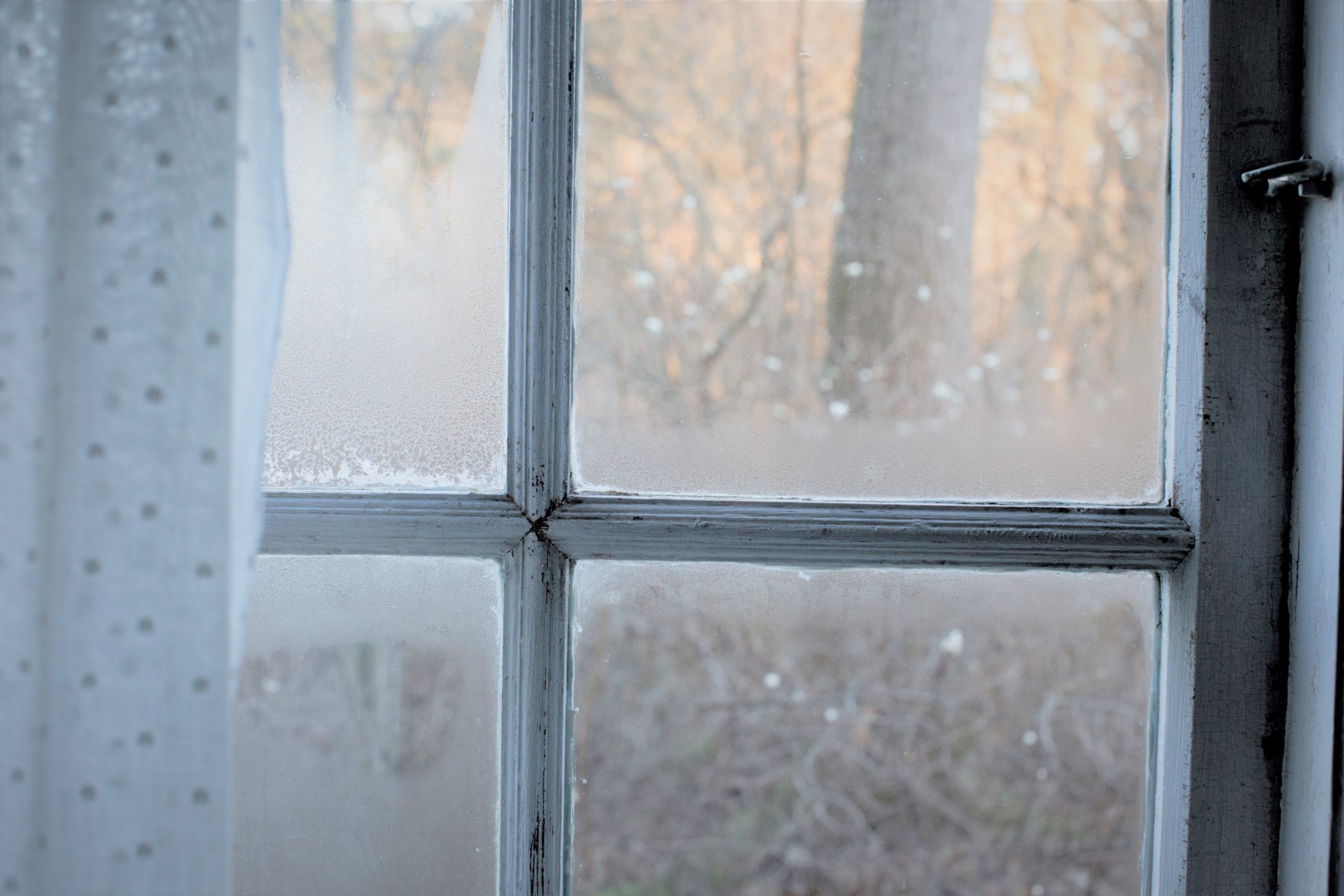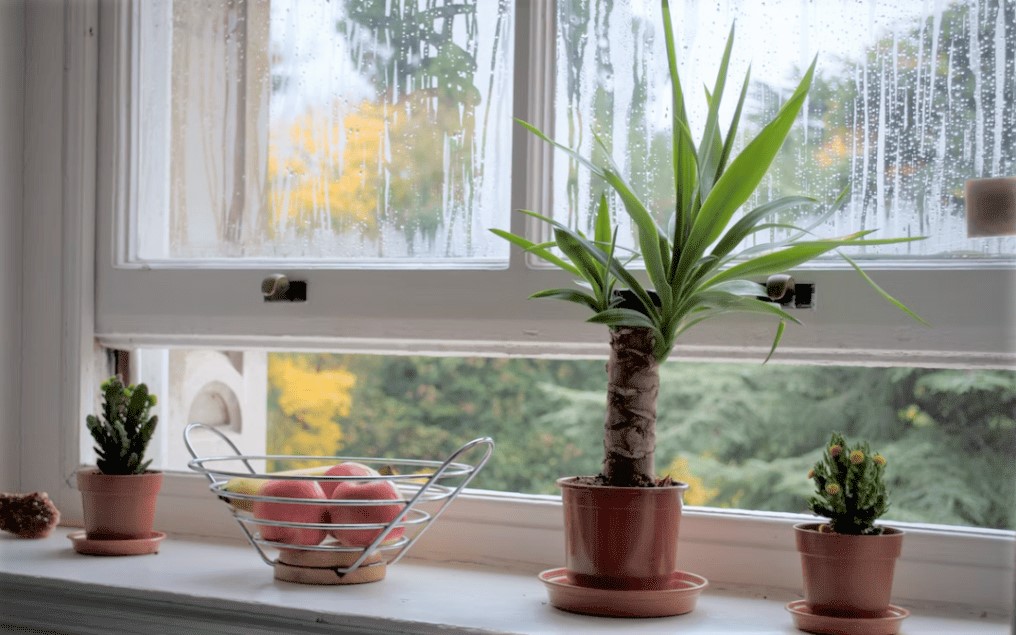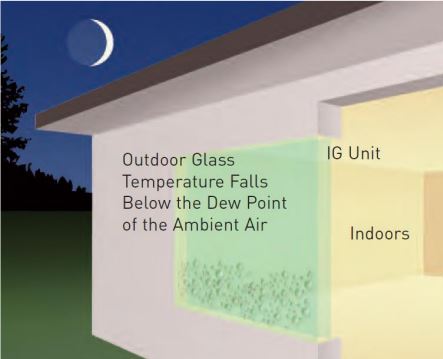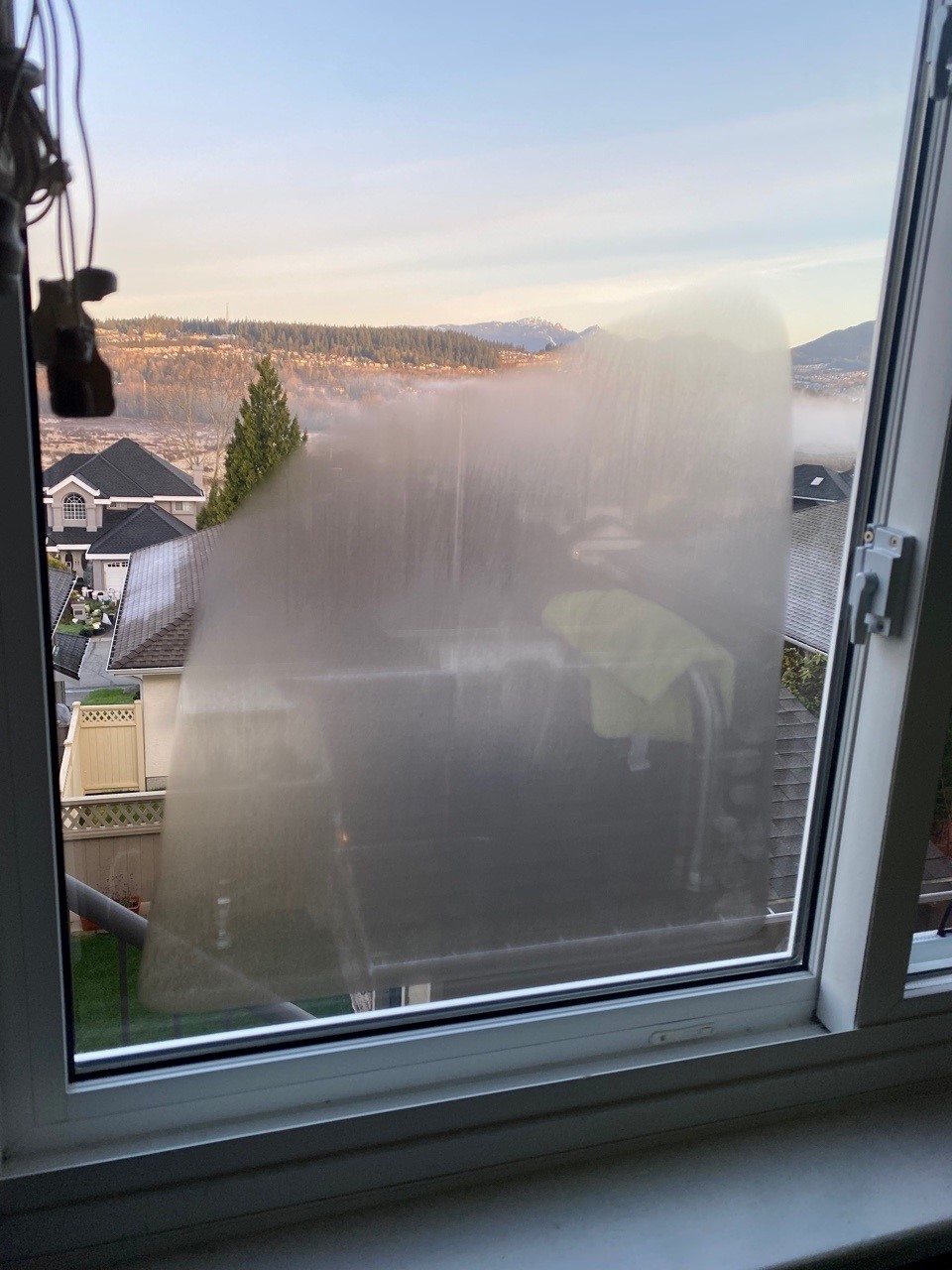Understanding the Condensation on Your Windows
When you’re inside, your windows offer a way to allow light into your home while letting you see what’s going on outdoors. They’re a beautiful way to have a space feel more open while being functional in offering a fresh breeze when you open them. However, a foggy window can significantly reduce the functionality and hinder your view, so here’s how to stop condensation on windows in your home.
Where on Your Window is the Condensation?
The first step to understanding the condensation and finding the solution is to determine where on your window the condensation is collecting.
- The condensation is on the inside of your window. The problem: too much moisture in your home. We will get into how to fix this later in the post.
- The condensation is in between the two layers of glass. Moisture is inside the two layers of glass, this means your ‘sealed unit’ which is the double pane of glass has failed. The only way to fix this is to replace the sealed unit, or the entire window frame and glass.
- The condensation is on the outside of your window. This is actually not an indication that the window or glass is defective. This often occurs in Spring and Fall. Similar to dew formation on grass, car hoods and roofs, it is a fact of nature. The presence of moisture indicates that a specific set of atmospheric conditions exists and that the insulating glass unit is indeed doing its job – that of insulating the building from the environment.
What Is Window Condensation?

When you get a cold drink, after time, water beads on the outside of the glass, which is often referred to as sweating. Condensation is the process of vapour becoming a liquid, so essentially, window condensation occurs when gas in the air gets trapped and cold enough to liquify. When warm air encounters a cool surface, it will become a liquid. This is why areas like cold water pipes, exterior door locks and hinges, and windows are particularly prone to condensation.
What Causes Condensation Inside Windows?
Besides changing seasons, there are other reasons why condensation happens, some of which are dealt with quickly. For example, you’ve probably experienced temporary condensation while bathing, cooking, or doing laundry, which is typical. Using exhaust fans and opening a window can aid in these brief situations.
If you experience more permanent problems with windows or other surfaces, you should take further action to prevent mould and damage to your home. Knowing how to stop condensation on windows will help reduce humidity throughout your entire home. Dehumidifiers effectively take liquid out of the air, but you need to empty them regularly. Taking shorter showers, using a clothes dryer instead of hanging laundry to dry, and discontinuing the use of humidifiers will also help.
How to Reduce Moisture in Your Home
It’s also essential to keep air circulating throughout your home. Use fans or keep your central air on constantly to help with the indoor airflow. Keep the closet, bedroom, and other doors open as much as possible to aid air circulation. Also, be sure that your clothes dryer vents outside and close off humidity-producing areas, such as a hot tub or pool. Another area prone to condensation can be the basement or crawlspace, so cover any exposed earth with a protective layer, such as heavy polyethylene.
Glass is often one of the coldest surfaces in a house, especially during winter, which is why you’ll often see condensation on and around windows. If you have old aluminum frames, they are a conductor bringing the outside temperature into your home, it may be time to replace your current windows and glass doors with multiple-glazedenergy efficient vinyl windows.
Why Is Condensation Inside Windows Bad?

Having condensation inside windows isn’t ideal for your view, but it can also pose a significant problem if it isn’t dealt with quickly and correctly. Windows in older homes are often single-paned, so although condensation may form on the inner side of the glass, it doesn’t collect inside of the glass itself.
However, if you have modern windows that are double or triple-paned, having condensation between panes, unfortunately, means that a seal has broken. Although you may be looking for a solution for foggy window repair, the options are few. A broken window seal with vapour trapped inside usually won’t clear up on its own and is only rectified by replacing your windows.
Condensation in Between the Two Layers of Glass or ‘Airspace Condensation’
Glass units should be replaced when condensation is evident in the airspace or in between the two layers of glass. You’ll know this is your issue if you cannot wipe away the condensation from the inside or outside, and the condensation does not go away throughout the day. As explained by our glass manufacturer Cardindal Glass: Insulating glass units experiencing condensation in the airspace are usually due to a failure of the insulating glass seal. This is first evident in the wintertime when the outdoor temperatures are low causing a lower glass temperature and the potential for condensation to form. Airspace condensation can also be caused by a small crack in the glass that is sometimes not immediately evident. The outdoor and indoor glass surfaces should be cleaned to make certain the condensation is in the airspace and not on the outdoor or indoor glass surfaces.
In the condition that your windows are old and drafty, it most likely makes sense to replace the entire window frame with the sealed unit. However, if you have Long Life Windows, simply give us a call as your windows are under our lifetime warranty! If we did not replace your windows, and you just want to replace the glass, call our friend Steve at Klearpro Window Solutions.
Condensation is on the Outside of Your Window, it Might Just Mean They are Working
Every year in the Spring and Fall we receive calls from homeowners about moisture appearing on the outside of their windows, often when the sky is clear but the humid fall air is cooler. The information below is courtesy of Cardinal Glass, who is the manufacturer of the excellent sealed units in our windows. It explains this phenomenon well.

Condensation on the outdoor surface of an insulating glass unit (IG Unit) is not an indication that the insulating glass unit is defective. Under the right set of atmospheric conditions, it is possible to get condensation on the exterior glass surface of an IG unit. Specifically, these conditions are as follows:
- Glass temperature below dew point temperature
- Clear night sky
- Still air
- High relative humidity
- Well-insulating glazings
Exposed to these conditions, the outdoor surface of the glass can radiate heat away to the night sky such that the glass temperature falls below the dew point of the ambient air. When this occurs, moisture from the air condenses on the glass surface. Only when the glass temperature rises above the dew point will the condensation evaporate back into the air. Dew formation on grass, car hoods and roofs, building roofs and walls is common and accepted as a fact of nature.
The presence of moisture indicates that a specific set of atmospheric conditions exists and that the insulating glass unit is indeed doing its job – that of insulating the building from the environment. In this case, that insulation capability is what retards the flow of building heat through the glass and prevents warming of the outdoor glass surface above the dew point. If outdoor condensation occurs on an insulating glass unit, there is little or nothing that can be done to prevent its recurrence.
- Draperies can be opened to allow as much heat transfer through the glass as possible.
- Trees or buildings can block the radiation view to the sky reducing the chance for outdoor condensation.
- Shrubbery immediately adjacent to the glass can increase the local humidity increasing the chance for outdoor condensation. The outdoor surface of the insulating glass unit will warm and the condensation will evaporate when the wind picks up or sunlight is absorbed on the glass surface.

So, there you have the explanation directly from the experts. The fact is that this moisture is the result of high performance glazing doing its job well: it is slowing the movement of the heat in your home to the outside air.
Contact Long Life to Manage Window Condensation
If you’re experiencing constant foggy windows, please give Long Life Windows & Doors a call. We will find out the best solutions for your specific case. If that involves a replacement, we will work with you to find windows that best suit your needs.
